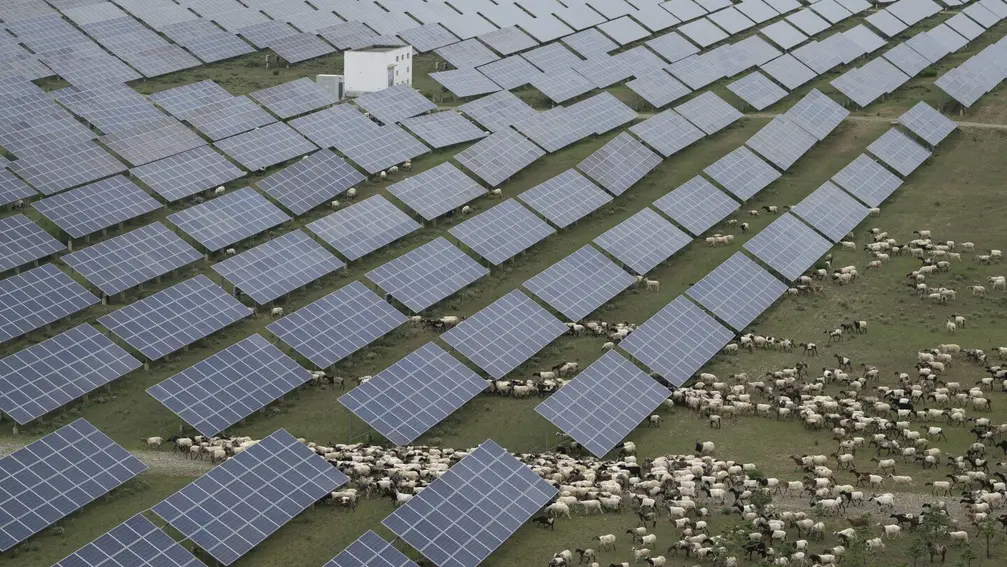T4K3.news
China cuts emissions but pace still lagging
Official data show a 1% emissions drop in H1 2025, but reform and grid upgrades are needed to hit longer-term targets.

Chinese officials unveil a vast Tibetan solar farm as new data show emissions edging down
China carbon emissions fall but pace remains slow
In Talatan, officials unveiled what they describe as the world’s largest solar farm, built across 610 square kilometers on the Tibetan plateau. The project would cover an area the size of Chicago and, when finished, could power millions of households. China has installed solar capacity at a rate that outpaces any other country. In the first half of 2025, the country added about 212 gigawatts of solar capacity, more than the United States had by the end of 2024. Solar energy is on track to become the largest source of electricity from clean energy, overtaking hydropower as wind capacity grows too.
On the emissions front, a study released this week shows carbon emissions fell 1% in the first six months of 2025 compared with a year earlier. The reduction comes even as electricity demand rose 3.7%, a sign that solar, wind, and nuclear power are expanding faster than consumption. Analysts say the data hint at a structural decline rather than a temporary dip, but they caution that coal remains a heavy headwind. To meet its 2060 carbon neutral pledge, China would need to average a 3% annual decline in emissions over the next 35 years, a pace most experts say requires faster grid reforms and continued investment in renewables.
Key Takeaways
"China needs to get to that 3% territory as soon as possible."
Lauri Myllyvirta on the pace of emissions decline
"We’re talking really for the first time about a structural declining trend in China’s emissions."
Myllyvirta on long-term trend
"This is a moment of global significance, offering a rare glimmer of hope in an otherwise bleak climate landscape."
Li Shuo on turning point
"There’s still a long road ahead."
Li Shuo on challenges ahead
The numbers point to a turning point, but they also reveal big challenges. A key one is the grid. China has built renewables in sparsely populated western provinces, but getting that power to the east is costly and complex. Transmission lines are planned, yet the system remains heavily dependent on coal plants that provide stable baseload. Big changes to how coal plants operate and how the network moves power are needed.
If the trend holds, the world could see slower climate damage, provided policy support and investment keep pace. Yet progress hinges on reforming the electricity market, expanding transmission capacity, and maintaining public support for a costly transition that touches jobs and regional growth. Without these shifts, a strong growth of renewables might not translate into rapid emissions cuts.
Highlights
- This is a moment of global significance offering a rare glimmer of hope.
- China needs to get to that 3% territory as soon as possible.
- We’re talking really for the first time about a structural declining trend in China’s emissions.
- The distribution of green energy resources is misaligned with the current industrial map.
Political and economic implications loom
The shift involves policy choices, investment risk, and public reaction as China pivots toward more renewables and less coal. These dynamics could invite political scrutiny, affect budget allocations, and influence investor sentiment.
The road ahead will test whether ambition can match action
Enjoyed this? Let your friends know!
Related News

AI leadership race accelerates

US withdraws from Paris climate agreement for second time

Thames Water contingency plans approved

EPA Plans to Revoke Greenhouse Gas Regulations

UK EV grant update

U.S. Announces $1.2 Billion Investment in Carbon Capture Projects

Nations must act on climate or face legal repercussions

Tesla's stock drops sharply amid political distractions
